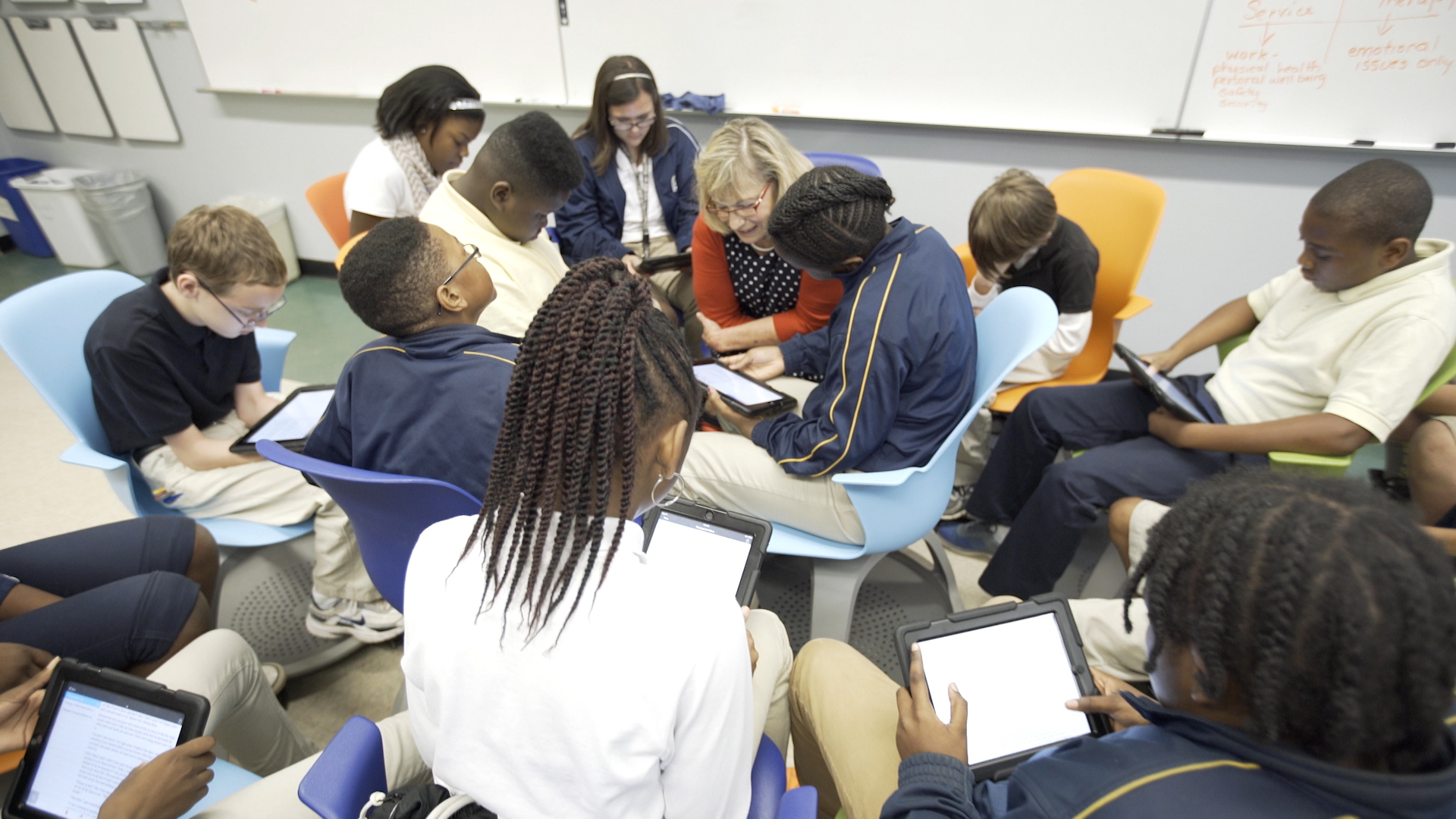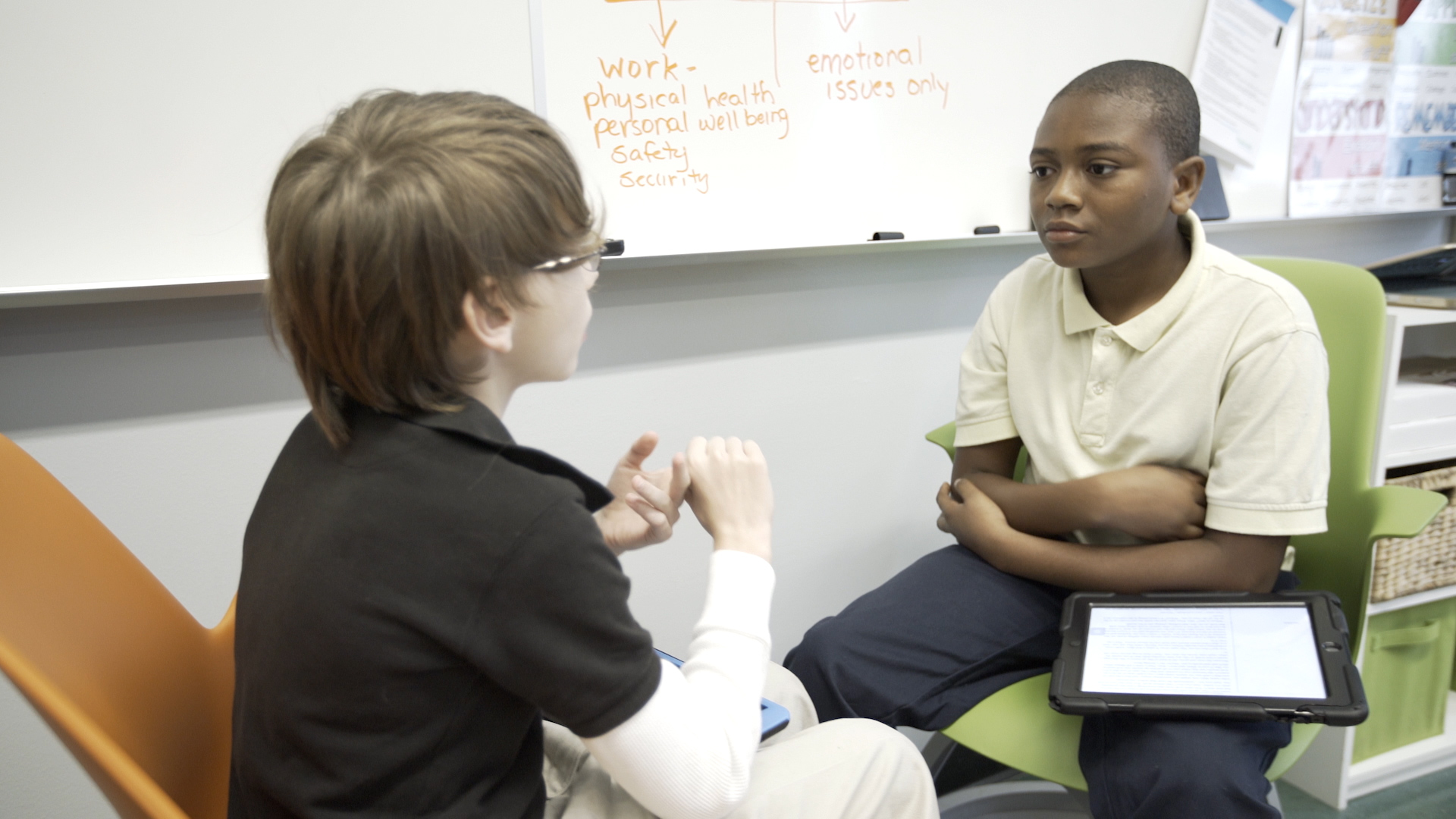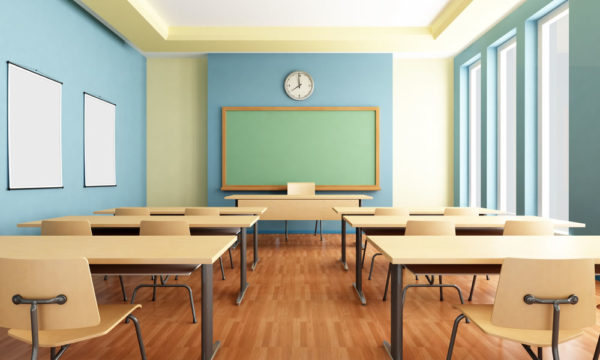Imagine a 5th grade classroom in the middle of a lesson. What do you see: charts, letters, and drawings on the wall? A teacher writing notes on a large chalk or white board at the front of the room? Rows of desks and chairs, which face a single direction? Maybe you imagined small bookshelves, an American flag, or other supplies. It’s likely we formed the same, all too familiar image in our mind.
This has been the traditional classroom for decades. Any generation could walk into a room and immediately identify it as a classroom.
At South Carolina’s Saluda Trail Middle School, my room has evolved from this stagnant design to one of innovation. It’s flexible. It’s colorful. It’s engaging.
Active is Yielding Results
Students don’t just sit facing the front of the room in immovable rows and columns. They roll around into small groups, interacting face-to-face while collaborating with their classmates and me, their teacher. The chairs detach from the desks and the tables tilt up and down to accommodate the use of new tools, like interactive white boards and handheld technology.

This is my active learning center, no longer the traditional classroom we remember. I’ve been teaching for more than three decades and my students are achieving at unprecedented levels. It’s clear the active learning center is yielding record results and having a remarkable impact on my students’ success.
Ours was one of only a few dozen schools awarded similar classroom overhauls through the Steelcase Education Active Learning Center Grant Program. My Saluda Trail 7th graders began class in the new room in 2016, and I have seen growth in three targeted areas:
- Completed assignments increased from 52 percent the previous year to 98 percent.
- End-of-year grades increased for 95 percent of the students, up from 81 percent who showed improved grades from the previous year.
- Growth targets for reading almost doubled, growing to 62 percent, up from 35 percent among my previous years’ students.
The data shows this room is making a difference, but it goes beyond the measurable results.
(Next page: How this classroom redesign success goes beyond test scores)
How Classroom Redesign Success Goes Beyond Test Scores
Before experiencing the active learning center, one of my students, Justin, had absolutely no self-confidence and rarely interacted with others in class. In this new design, he transformed into one of the most insightful student voices in our classroom, saying he “learned to be the person to start conversations” and “turned more from a follower to a leader.”
Tyrinn, now an 8th grader, describes his current traditional classroom as “really boring” and laments he is unable to dive into what interests and benefits him as much as he did in my active learning center. However, with the tools he learned in seventh grade, he has remained actively engaged.
These sharp increases in achievement and engagement are not a surprise. For years, research has revealed students learn more effectively when they are actively participating, and space heavily impacts student participation.
Think about walking into a traditional classroom set-up. The room immediately tells you what to expect: find your seat, listen to the instructor, take notes, wait your turn to speak.
A Classroom Redesign for an Entirely New Approach
The active learning approach uses the classroom as a tool to facilitate knowledge acquisition for our 21st century students. A teacher impacts learning through class organization, student control, and lesson preparation and presentation. The classroom also impacts learning either positively or negatively. A poor classroom design can stifle student creativity and promote negative learning habits, negating the teacher’s impact.
The classroom environment has a powerful influence on learning, so why are we allowing it to communicate the wrong message?
The active learning model modernizes the space in which students spend the majority of their time; developing an understanding of the world, thinking about their future, and learning the skills and knowledge needed to succeed beyond school.
Another Saluda Trail student, Michael, stated the classroom directed his thoughts to possible future careers by asking himself, “What would an engineer do? What would a chef do? What would a principal do?” when solving problems. My students are thinking three-dimensionally and applying their experience in practical ways. Justin said it enabled him to see real world applications in social studies, science, and math. Michael also added that he’s excited about learning and now believes college is a “when” not an “if.”

Active classrooms are transforming, not just learning, but lives. For students across the U.S., the desire to achieve is growing through active learning.
Teachers also Benefit
These classrooms are positively affecting teachers as well as students. I feel I finally have the classroom and the tools to support my teaching philosophy. My room is buzzing with activity. It re-energizes me daily, which in turn makes me a more effective teacher.
By tapping into student energy, my passion for teaching and learning is reignited.
Other industries have evolved far more than the classroom. We would struggle to identify an 18th-century doctor’s office, a 19th-century newsroom and even a 20th– century farm. Each has gone through radical overhauls in equipment, technology, and design. But the classroom remains unchanged, holding back our 21st-century students.
- 4 strategies that bring nature’s power to your classroom - May 8, 2024
- 3 ways a modern data solution can improve student outcomes - May 7, 2024
- 7 principles of outdoor learning for early childhood - May 7, 2024

